site search
online catalog
HARPERS FERRY TYPE III ALTERATION OF THE M1841 “MISSISSIPPI” RIFLE

Hover to zoom

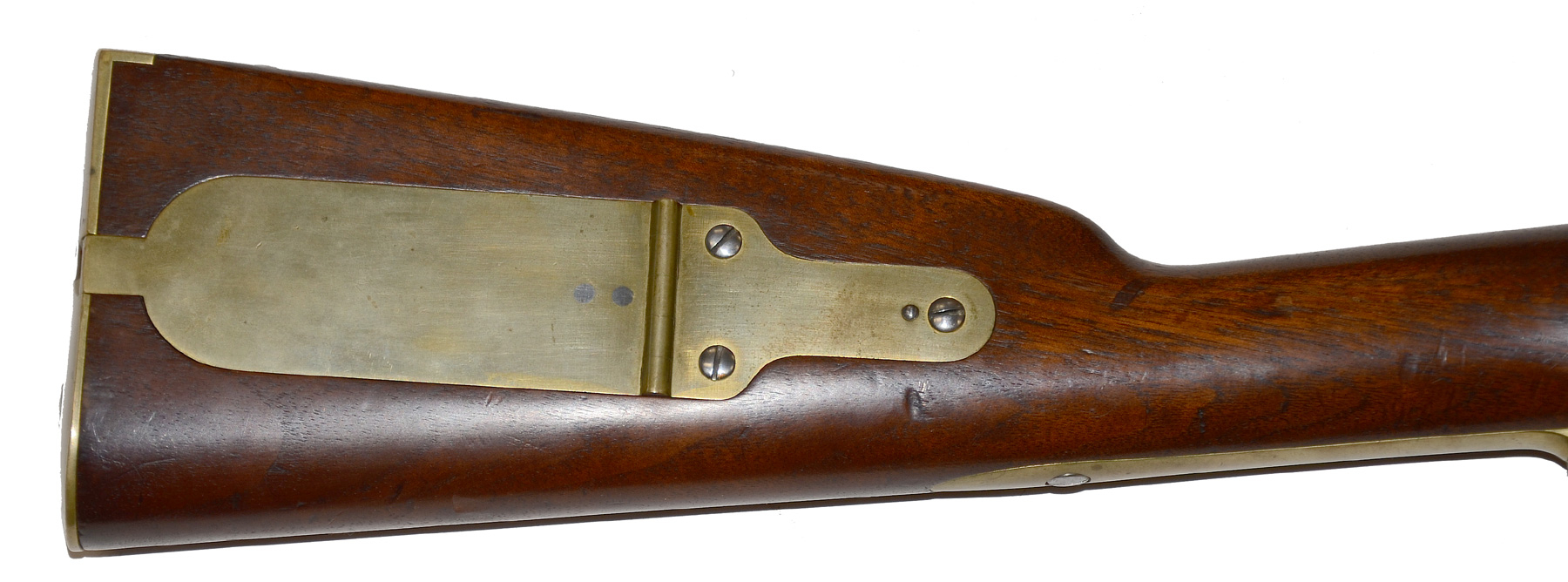
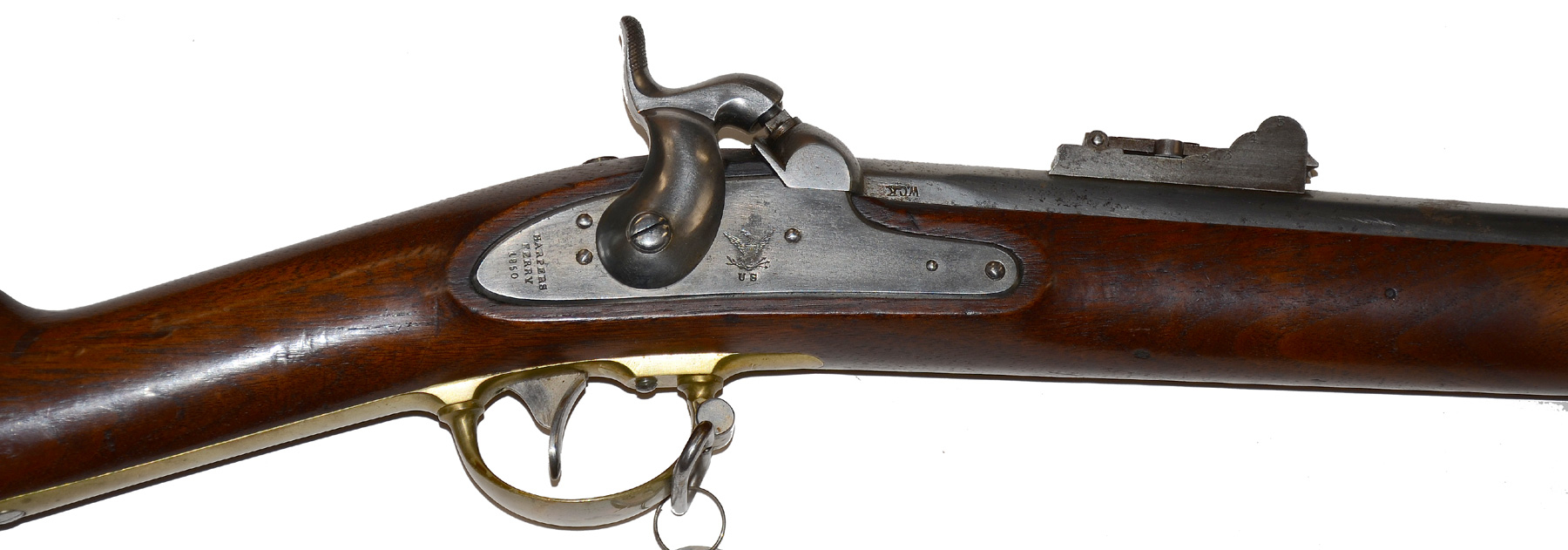

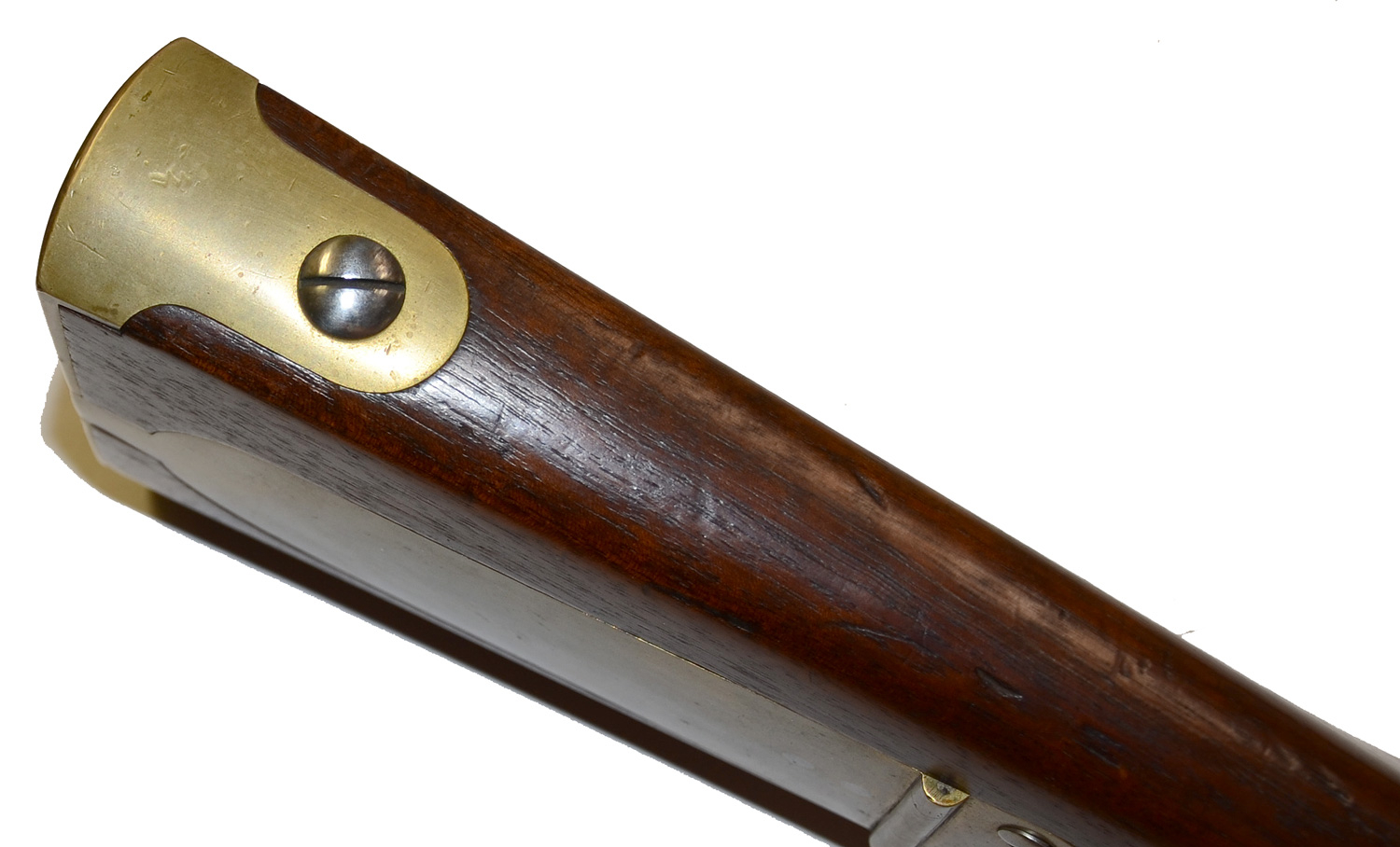
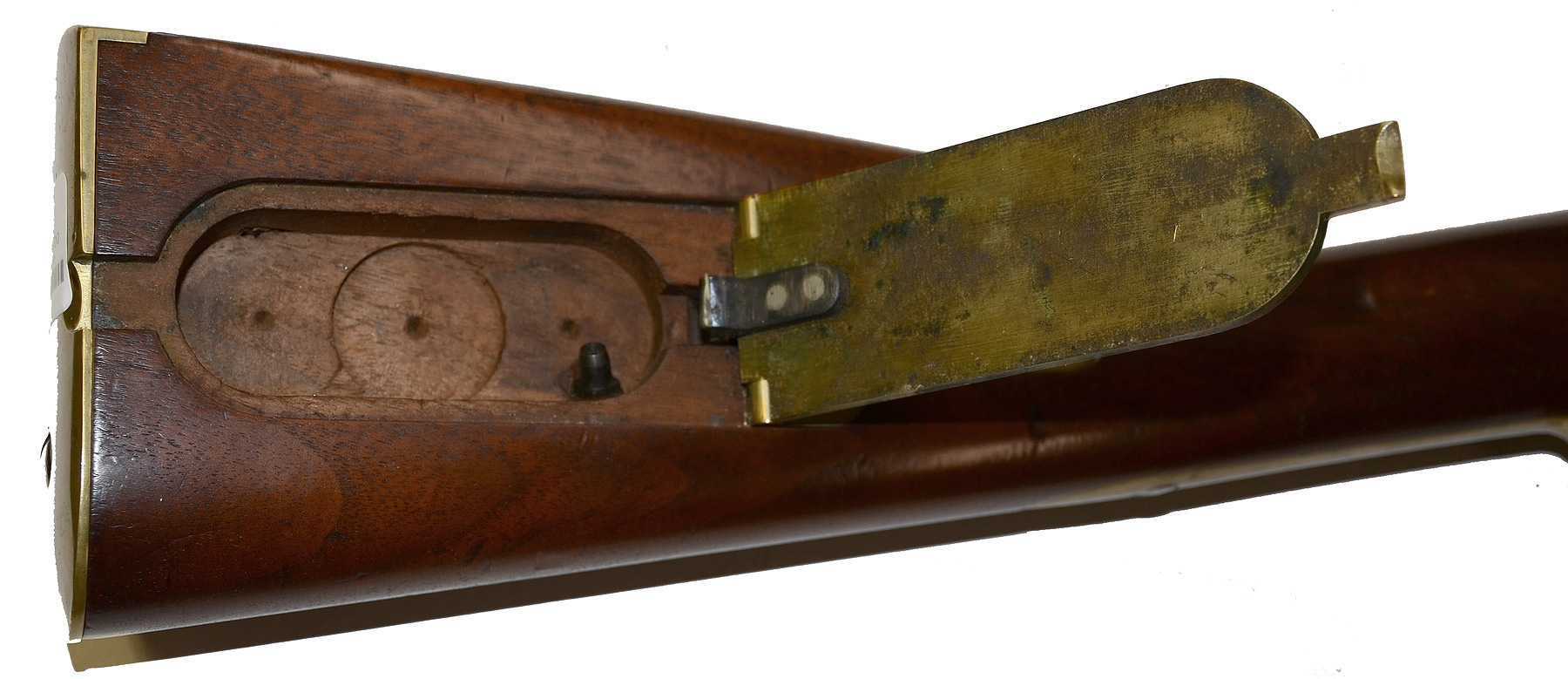
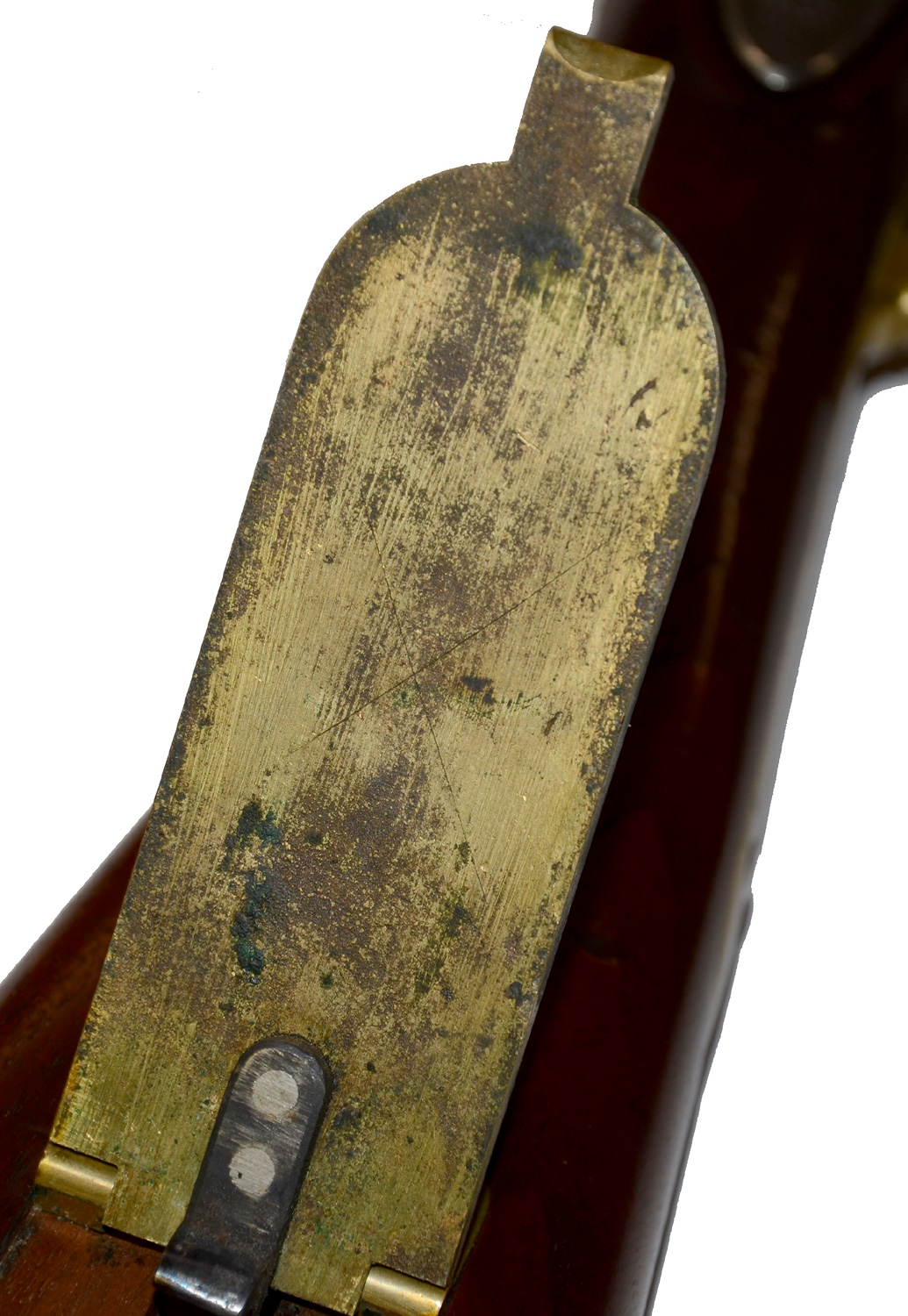
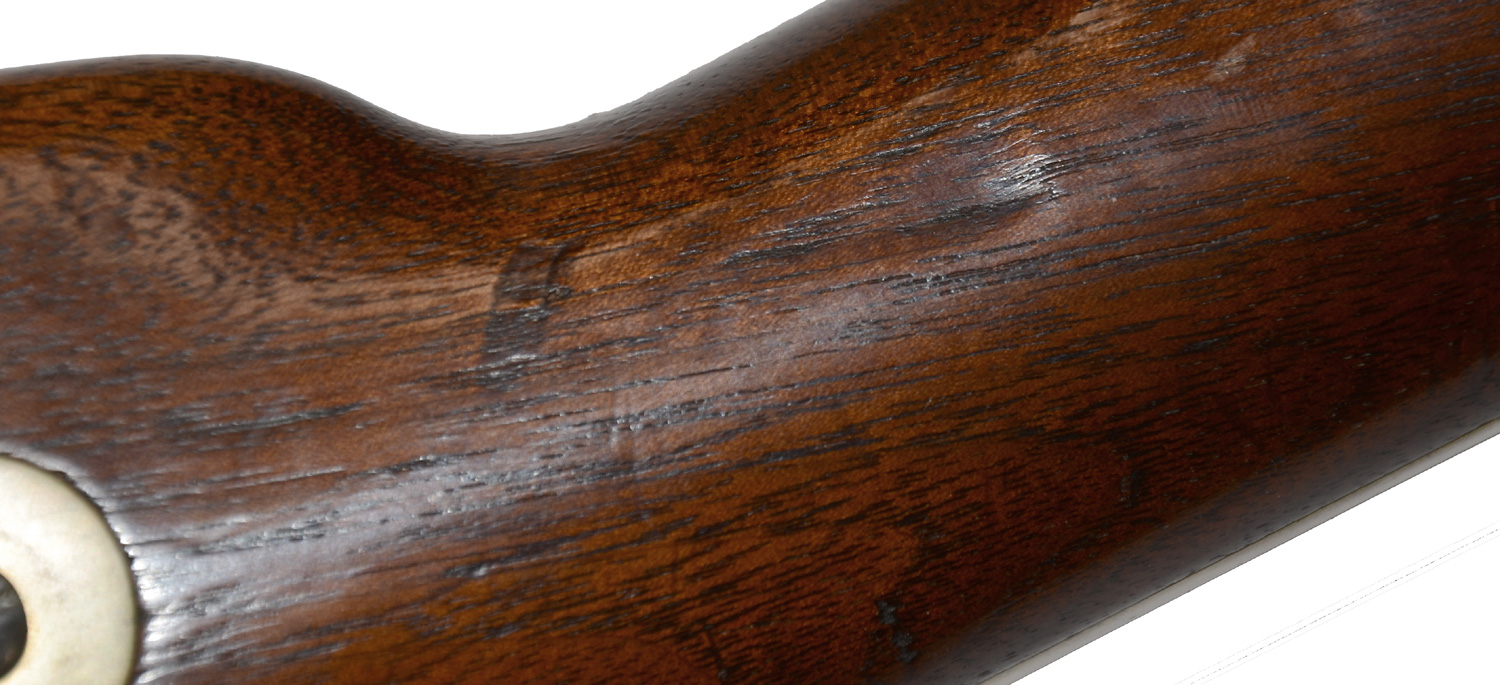
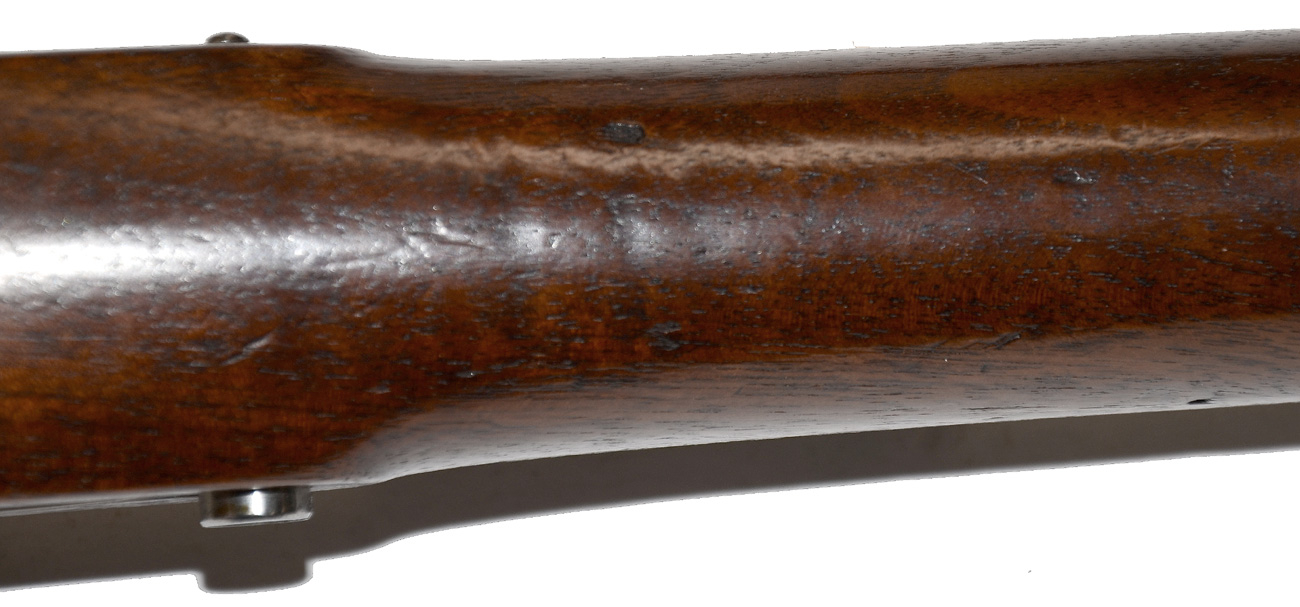
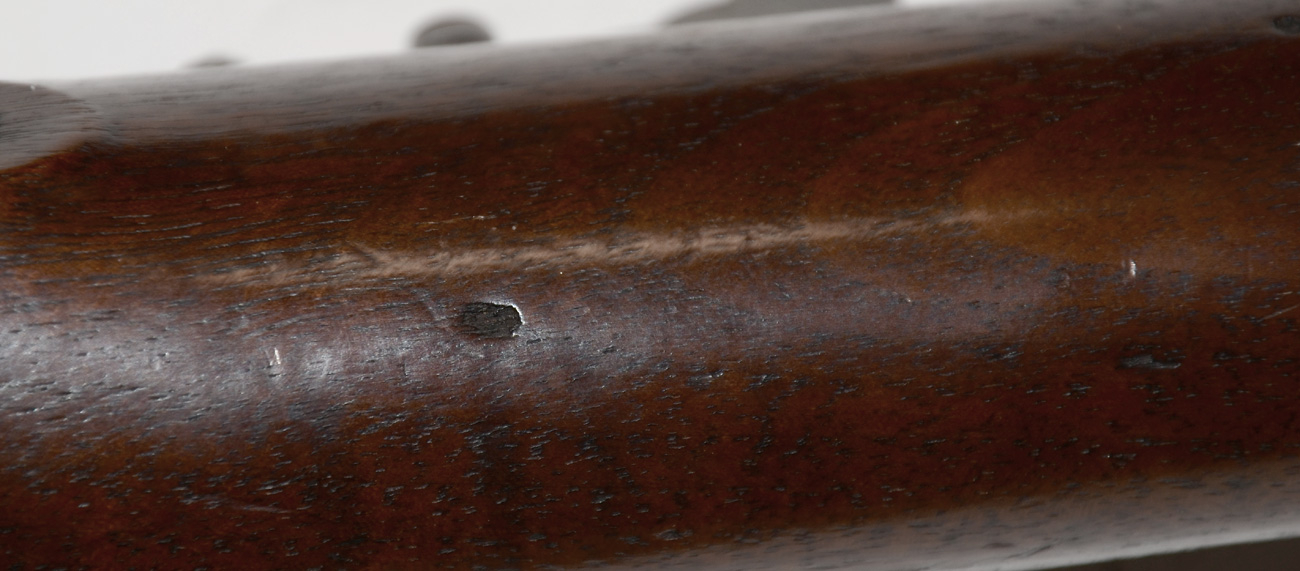

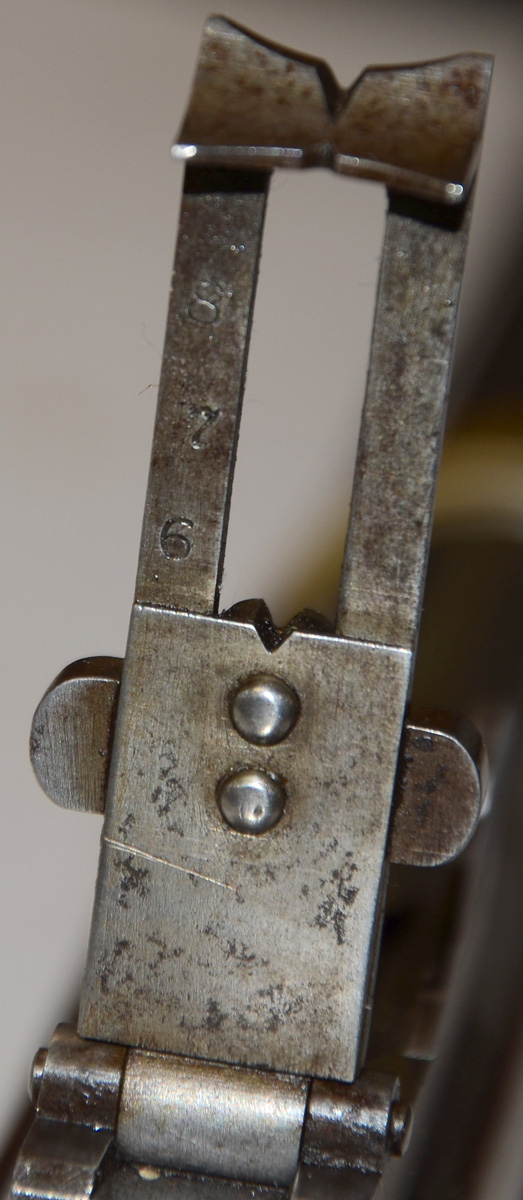
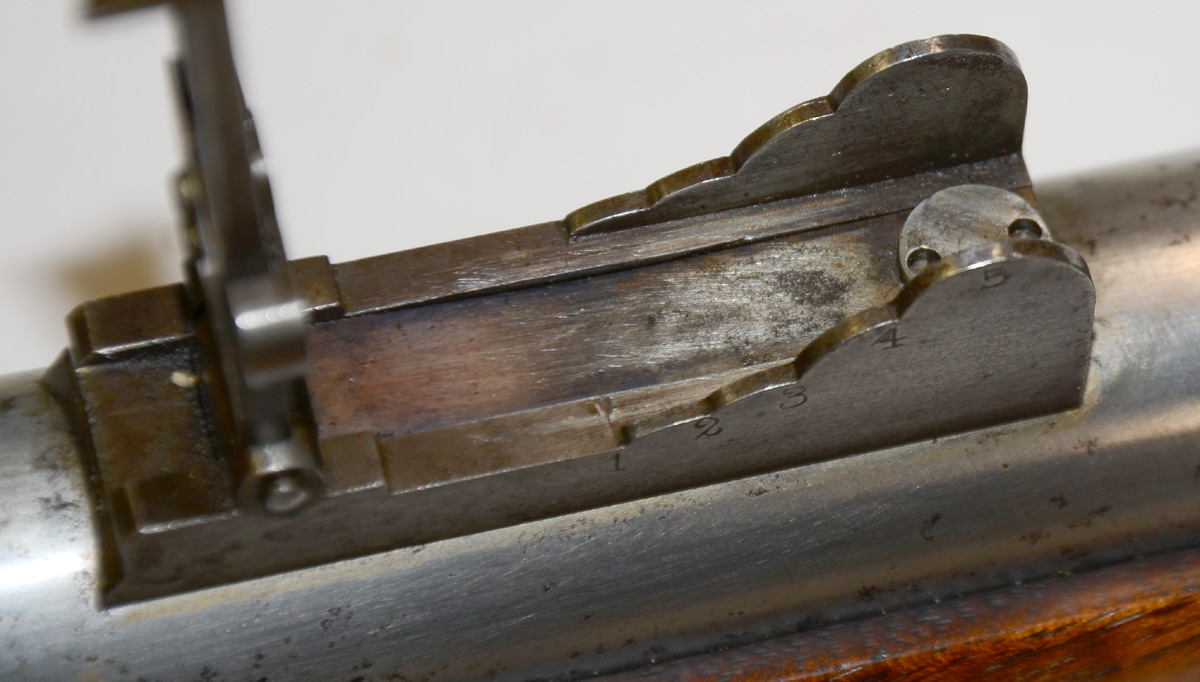

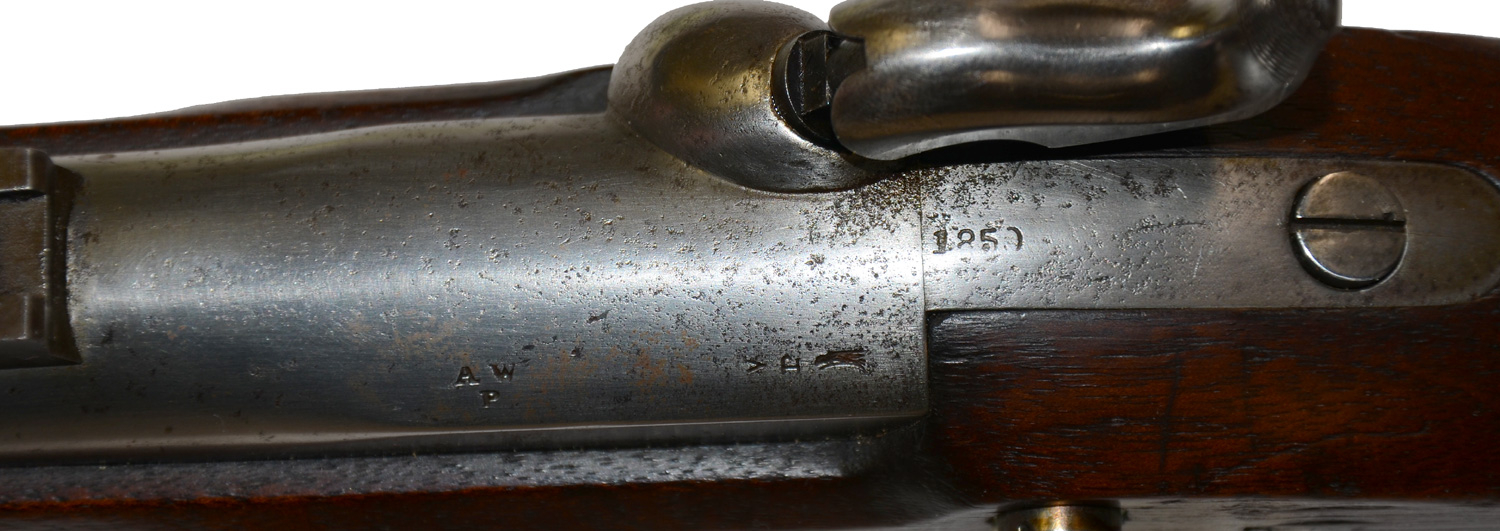
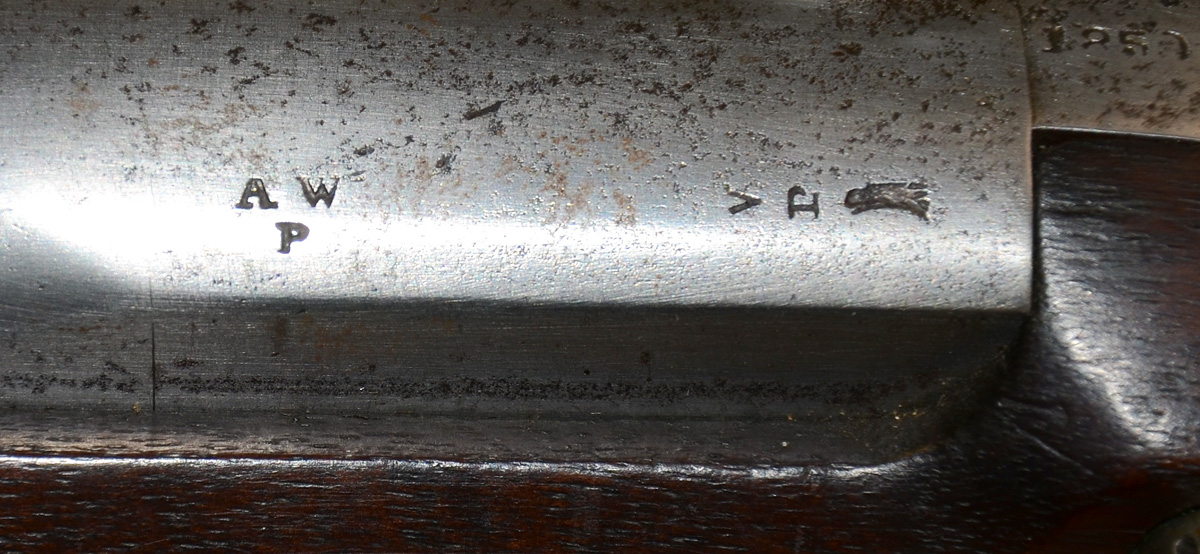
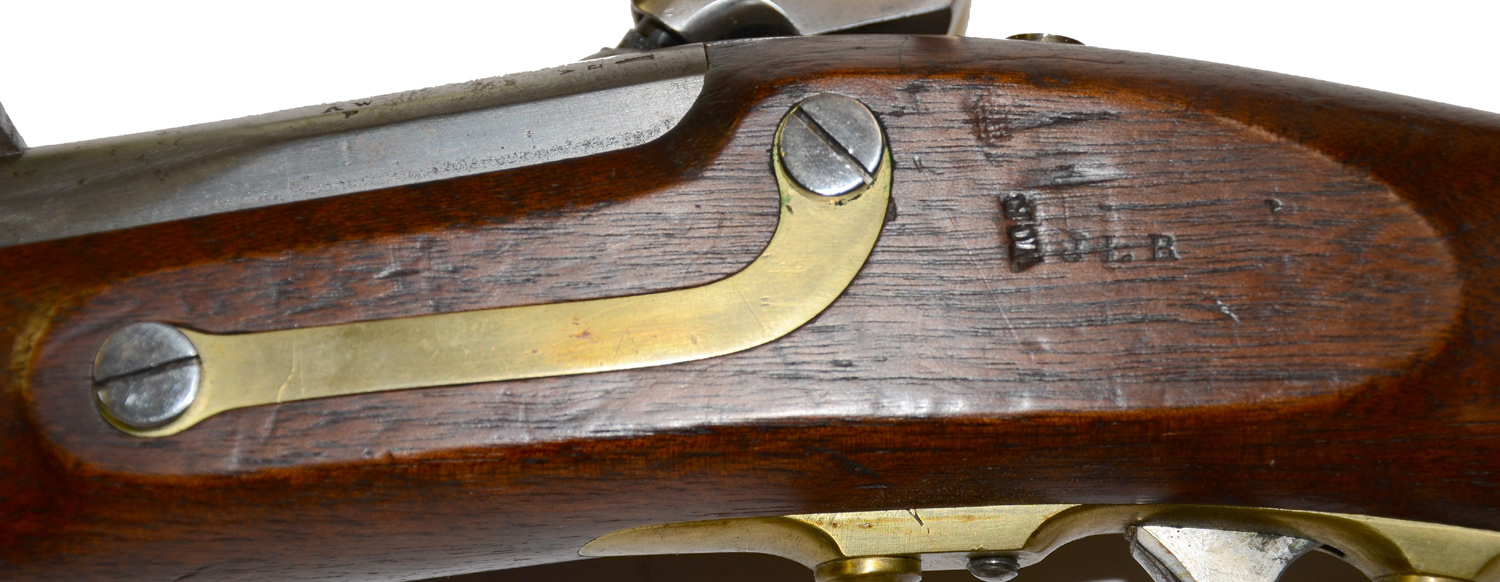
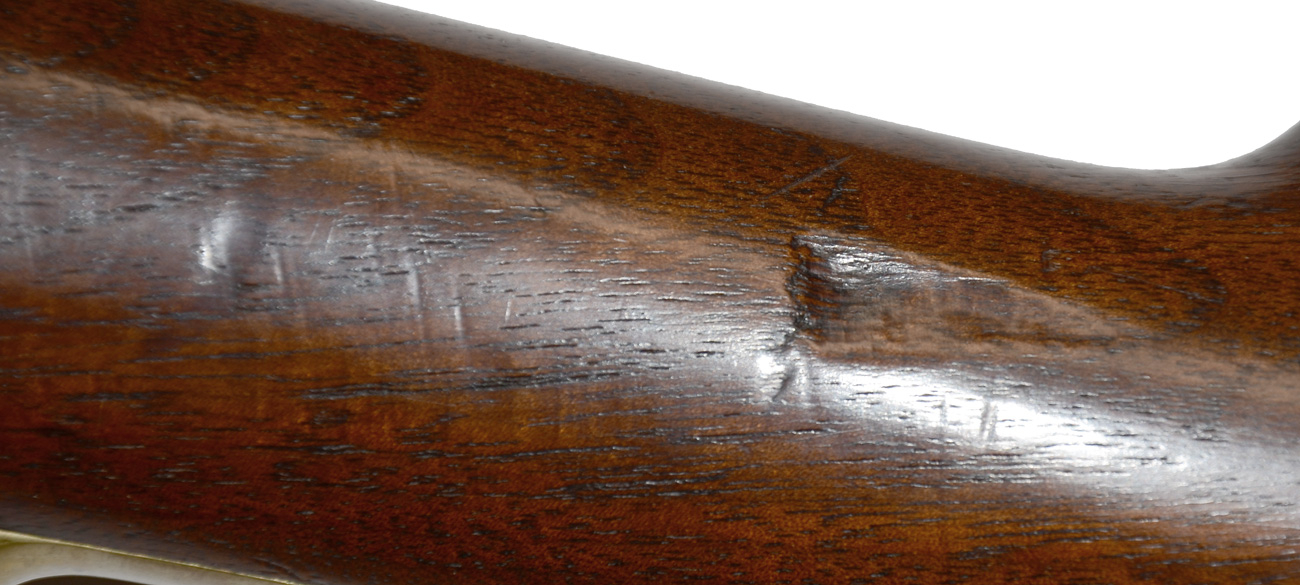
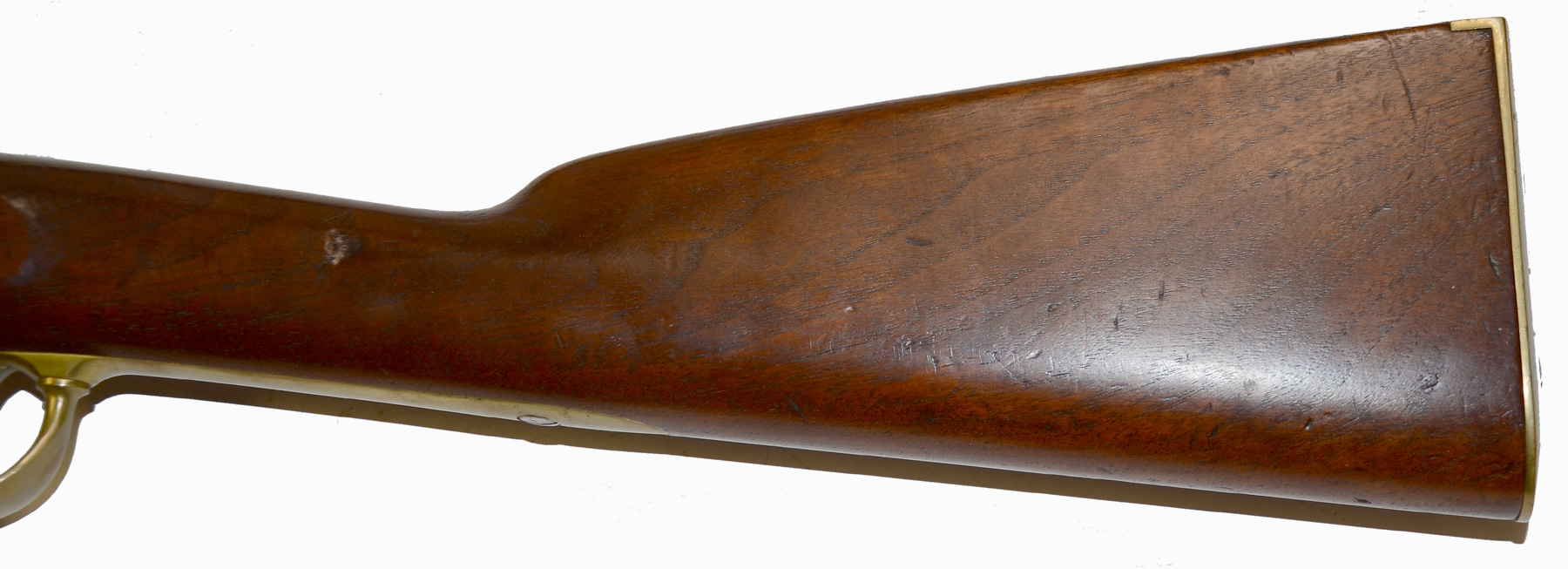

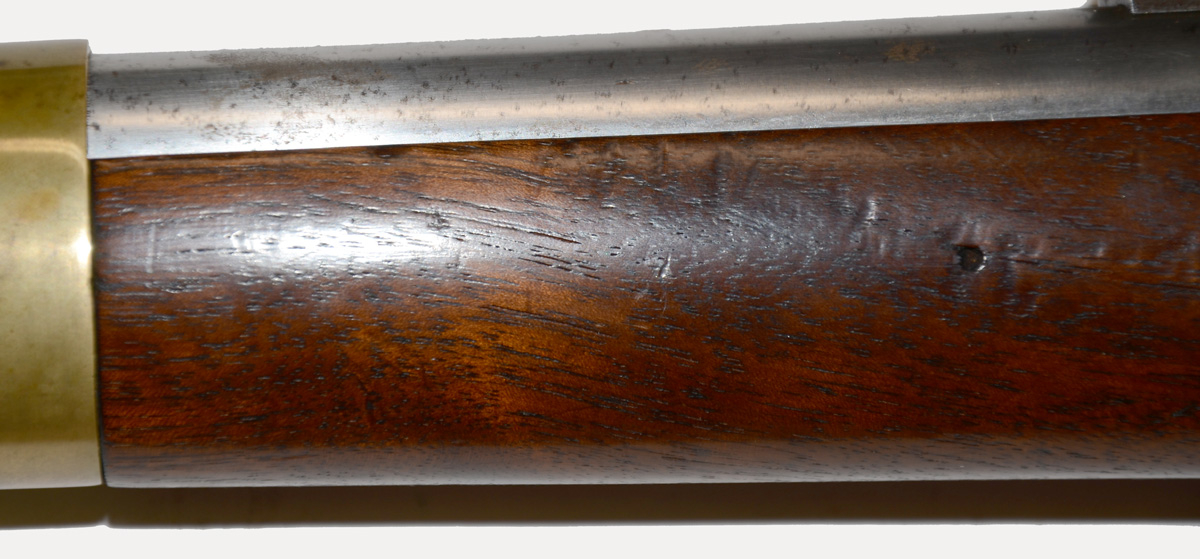
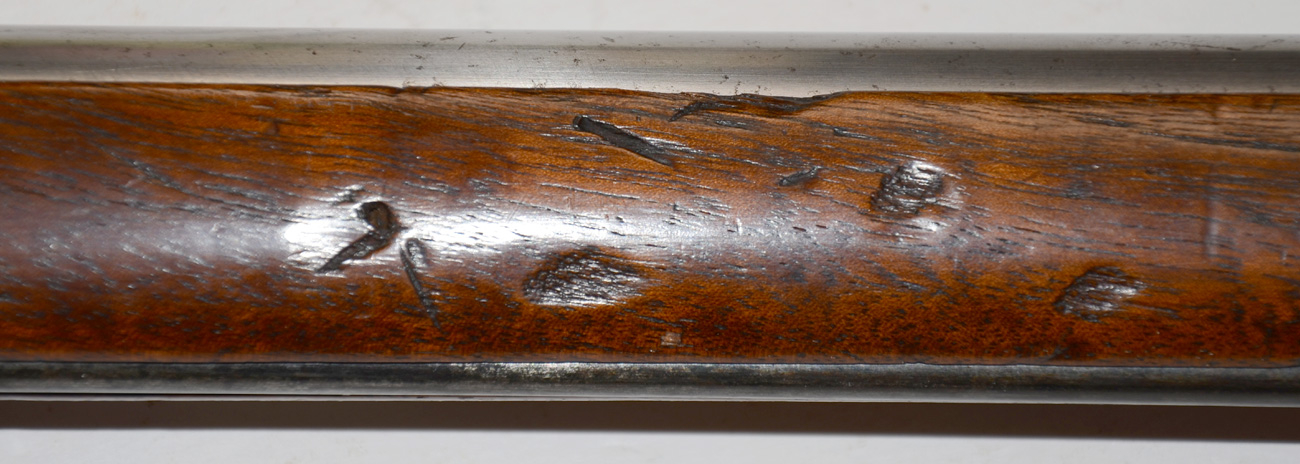

$5,250.00 SOLD
Quantity Available: None
Item Code: 1134-10
This Model 1841 rifle, the well-known “Mississippi,” rates excellent for condition, with smooth metal, crisp maker and inspector marks, and matching barrel and lock dates of 1850, nice wood, and a great bore. It shows typical alterations made to these arms at Harpers Ferry in the late 1850s to make them competitive with the new 1855 series of arms. This is the Harpers Ferry Type-III alteration in Moller’s classification (Am. Mil. Shoulder Arms Vol.3,) used from about December 1855 (fiscal year 1856) into fiscal year 1859. At least 4,500 were similarly altered, with 803 known to have reamed up to .58 caliber like this one in fiscal year 1857 and another 1,865 in fiscal year 1859 (i.e., 1 July 1858 to 30 June 1859.)
The alterations enabled the rifle to take a bayonet and to use the increased range and accuracy of new elongated ball (Minie ball) to better effect. In the Type-III alteration the nose cap was shortened to mount a bayonet lug (with no guide key) for a saber bayonet on the right side of the muzzle and the original front sight was replaced with the iron 1855 front sight using a block under the sight blade to act as a stop for the muzzle ring of the bayonet. The rear sight was replaced with 1855 long range rifle sight, fixed by a mortise and screw. Sometimes known as the slide or box sight, this has gradations marked along the side of the sight for ranges up to five hundred yards and on the ladder, which would be raised, for longer ranges. As is correct for the Harpers Ferry version of the pattern, there is no “US” marking on it. The sight is complete and functional.
The lock is crisply marked “HARPERS / FERRY / 1850” behind the hammer and bears a sharp Harpers Ferry style American eagle over U.S. forward of the hammer. The left breech of the barrel has sharp V/P/eagle head proofs with an “AW/P” barrel inspection mark just forward and 1850 date on the breechplug tang. This latter shows a little bit of rubbing and there is some scattered shallow pitting around the bolster from the corrosive effects of percussion caps, indicating that despite its great condition, it did see action. Otherwise, there are only some small scattered superficial gray spots. The barrel also bears a “WCK” inspector stamp on the right side, forward of the bolster. This matches one of two inspector’s initials in the wood on the left side flat and is certainly inspector William C. Kirby at Harpers Ferry. There is some slight debate on the issue, but most come down in favor of it signifying re-inspection of the older iron barrels at the time of alteration, or specifically checking to make sure the bore had not been distorted by the new screw attachment of the rear sight. In either case, his mark also shows up on Harpers Ferry 1855 pattern arms made from late 1858 into early 1859, a perfect date range for this rifle (Willyard 1855 Arms p.99.)
The wood rates fine or better, with a tight fit to the metal, good edges, crisp patch-box cutout with correct three pilot hole/router marks, a spare nipple in place, and visible cartouches on the left flat. The surface is very good, showing nice grain, excellent finish and warm brown color. There are some scattered handling marks, the largest being an indentation on the left wrist, just forward of the comb, and a smaller, shallower one on the right at about the same position, perhaps from a gun rack. The left forestock is good, just a minor ding or two forward of lower band and a couple of shallow chips on the barrel channel just aft of the front band. The right has a couple of small pressure dents down near the ramrod channel at about the same spot and just one or two small narrow dings further back. The ramrod channel is very good- one or two very small dings, no significant chips or splinters from returning the rod. The left side flat is excellent with crisp and legible block letter “JLR” and “WCK” inspector stamps.
This rates excellent for condition, with good mechanics and great bore. The metal is smooth throughout with a nice warm mustard tone to the brass and the iron is in the bright, as is correct for the long range rifles refinished at Harpers Ferry starting in late 1858 (Moller 3.139.) All bands, swivels, springs and the rod (correctly rebated for use with the conical ball) are in place. It would be hard to upgrade this one as an example of the famous “Mississippi” rifle upgraded at the armory itself and certainly called into service, but well cared for, during the war. [sr] [ph:L]
DISCLAIMER: All firearms are sold as collector's items only - we do not accept responsibility as to the shooting safety or reliability of any antique firearm. All firearms are described as accurately as possible, given the restraints of a catalog listing length. We want satisfied customers & often "under" describe the weapons. Any city or state regulations regarding owning antique firearms are the responsibility of the purchaser. All firearms are "mechanically perfect" unless noted, but again, are NOT warranted as safe to fire.
~~~~~~~~~~~~~~~~~~~~~~~~~~~~~~~~~~~
THIS ITEM, AS WITH ALL OTHER ITEMS AVAILABLE ON OUR WEB SITE,
MAY BE PURCHASED THROUGH OUR LAYAWAY PROGRAM.
CLICK HERE FOR OUR POLICIES AND TERMS.
THANK YOU!
Inquire About HARPERS FERRY TYPE III ALTERATION OF THE M1841 “MISSISSIPPI” RIFLE
Most Popular
Historical Firearms Stolen From The National Civil War Museum In Harrisburg, Pa »
Theft From Gravesite Of Gen. John Reynolds »
Selection Of Unframed Prints By Don Troiani »
Fine Condition Brass Infantry Bugle Insignia »
featured item
CONFEDERATE CLOVERLEAF PIKE
A very good, unmarked example of the striking Confederate “cloverleaf” pike formerly in the collections of the Texas Civil War Museum. The nickname obviously derives from the trefoil spearhead with a long central blade widening out for the lower… (1179-1659). Learn More »
site search
Upcoming Events
The shop is currently closed so that we may conduct our annual inventory. We are available by phone… Learn More »


